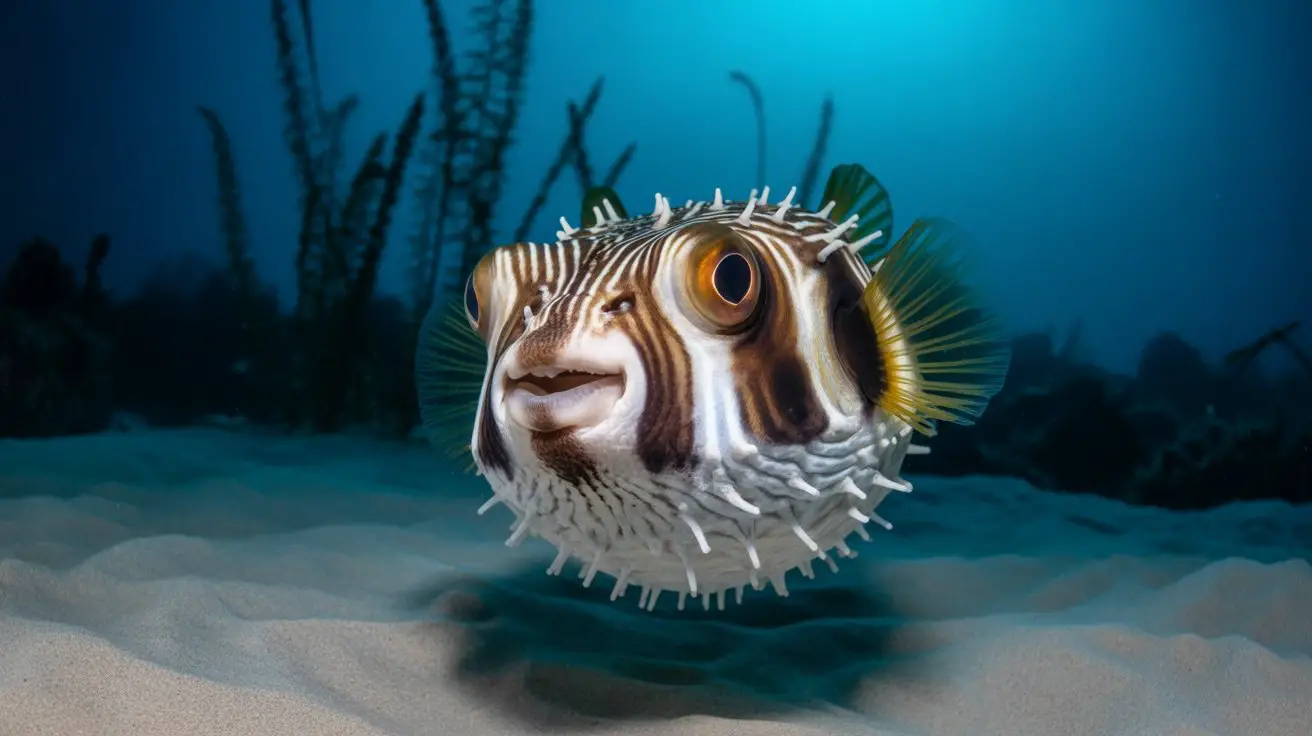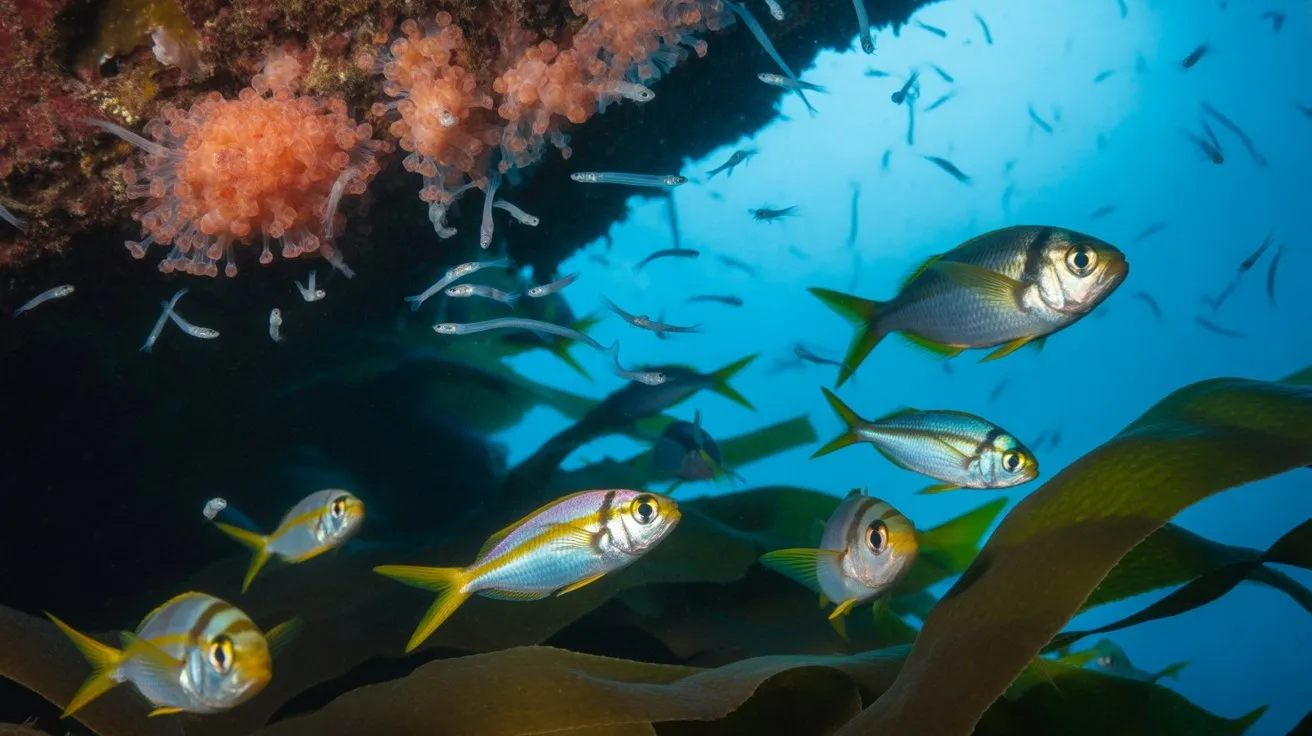You’ve likely never considered that pufferfish can generate internal pressures exceeding 40 pounds per square inch during their defensive inflation—enough force to rupture most biological tissues. Yet these remarkable creatures have evolved specialized anatomical structures that withstand such extreme pressures while simultaneously deploying chemical warfare through tetrodotoxin production. Their multi-layered defense system operates through precisely coordinated physiological mechanisms that challenge conventional understanding of marine survival strategies.
The Anatomy of Inflation: How Pufferfish Transform Their Bodies
When threatened by predators, pufferfish execute one of nature’s most remarkable defensive transformations by rapidly inflating their bodies to several times their normal size.
You’ll observe this process begins when specialized muscle contractions force water into the fish’s highly elastic stomach. The stomach’s pleated interior structure unfolds like an accordion, accommodating massive volume increases.
You can see how the pufferfish’s skin stretches due to elastin fibers that maintain structural integrity during expansion. The fish’s spine becomes rigid through hydraulic pressure, creating a spherical shape that’s difficult for predators to swallow.
This inflation mechanism relies on the fish’s ability to quickly gulp water through its mouth while simultaneously sealing its gill openings to prevent backflow.
Lightning-Fast Response: The Speed of Pufferfish Defense Activation
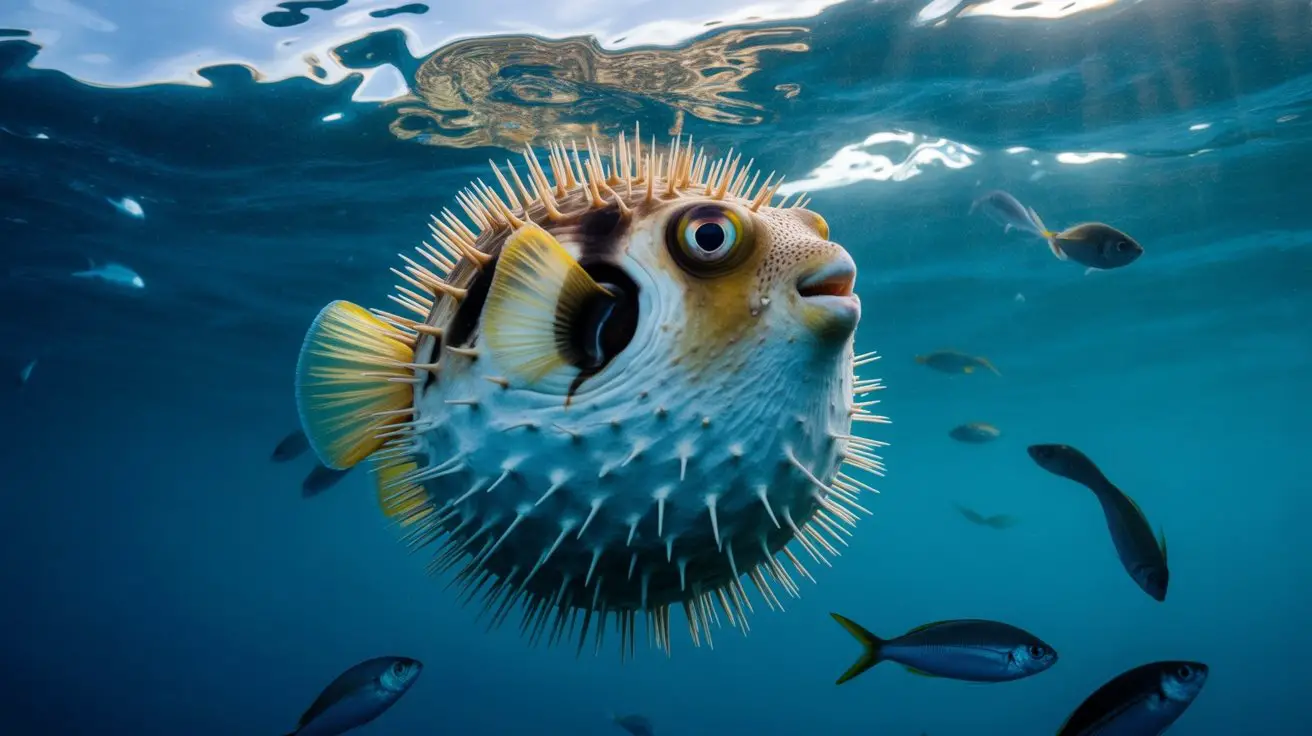
The remarkable inflation mechanism you’ve just examined operates with extraordinary speed that often determines the pufferfish’s survival.
When you observe a threatened pufferfish, you’ll witness complete body inflation occurring within 2-4 seconds. This rapid response relies on specialized muscle contractions that force water into the stomach cavity at pressures exceeding 50 mmHg.
You can measure the inflation rate through high-speed videography, revealing that pufferfish achieve maximum size in 3.2 seconds on average.
The sympathetic nervous system triggers this defensive response, releasing stress hormones that activate smooth muscle tissue surrounding the stomach.
Research demonstrates that smaller species like Takifugu niphobles inflate faster than larger variants, completing transformation in just 1.8 seconds. This speed advantage proves vital when escaping predators in coral reef environments.
Tetrodotoxin: Nature’s Most Potent Chemical Weapon
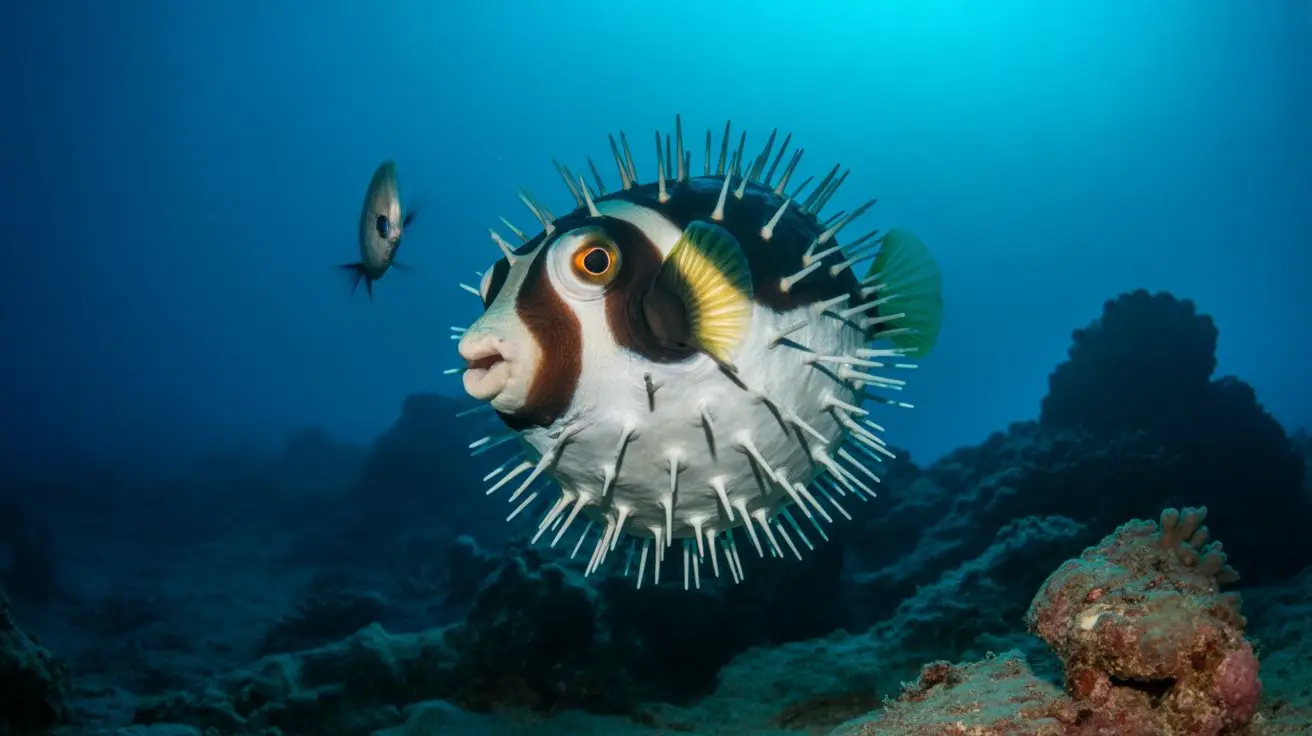
Beyond their impressive inflation capabilities, pufferfish deploy tetrodotoxin (TTX), a neurotoxin that’s 1,200 times more lethal than cyanide. You’ll find this alkaloid concentrated in specific organs, blocking voltage-gated sodium channels and preventing nerve signal transmission.
| Organ | TTX Concentration Level |
|---|---|
| Ovaries | Extremely High |
| Liver | High |
| Intestines | Moderate |
| Skin | Low-Moderate |
| Muscle | Minimal |
When you encounter TTX poisoning, you’ll observe progressive paralysis beginning with extremities and advancing toward respiratory muscles. The toxin doesn’t cross the blood-brain barrier, so victims remain conscious throughout the ordeal. You won’t find any antidote for TTX—treatment relies entirely on supportive care until the neurotoxin naturally clears from the system.
Spines and Spikes: External Armor That Deters Predators

Complementing their chemical arsenal, pufferfish possess an impressive array of external defensive structures that transform their surface into a formidable barrier.
You’ll observe modified scales called dermal denticles that convert into sharp, rigid spines during inflation. These spines aren’t randomly distributed—they’re strategically positioned across dorsal, lateral, and ventral surfaces to maximize predator deterrence.
When you examine inflated specimens, you’ll notice the spines extend perpendicular to the body surface, creating a nearly impenetrable defensive matrix.
The spine morphology varies considerably between species: some feature needle-like projections while others develop broader, triangular structures. This external armor works synergistically with inflation mechanics—as internal pressure increases, spines become more pronounced and threatening.
Research indicates that even juvenile predators quickly learn to avoid these spiny adversaries after initial encounters.
Species Variations: Different Pufferfish, Different Defense Strategies
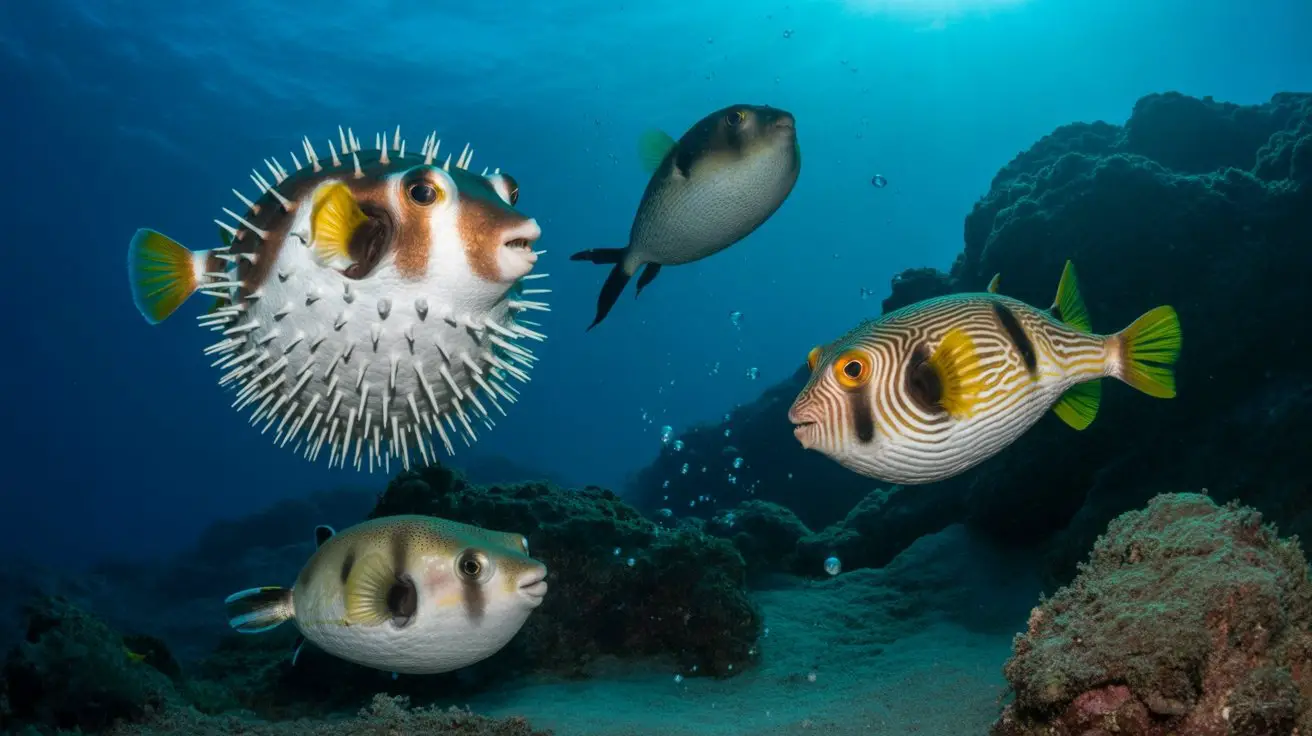
While all pufferfish share fundamental defensive principles, you’ll find remarkable diversity in how different species implement their protective strategies.
Smooth puffers like Lagocephalus rely primarily on inflation and toxin production, lacking the pronounced spines of their relatives.
Spiny puffers (Diodon) maximize physical deterrence through elongated spines that become formidable when inflated.
Northern puffers exhibit seasonal behavioral adaptations, forming defensive schools during spawning.
Porcupinefish demonstrate the most extreme spine development, with some species displaying over 30 spines per square centimeter.
Toxin concentrations vary considerably between species—fugu contains lethal tetrodotoxin levels, while some freshwater puffers produce minimal toxins.
You’ll observe that habitat influences these variations: reef-dwelling species emphasize visual deterrence, while open-ocean species prioritize rapid inflation responses.
Predator Encounters: When Defense Mechanisms Meet Real Threats
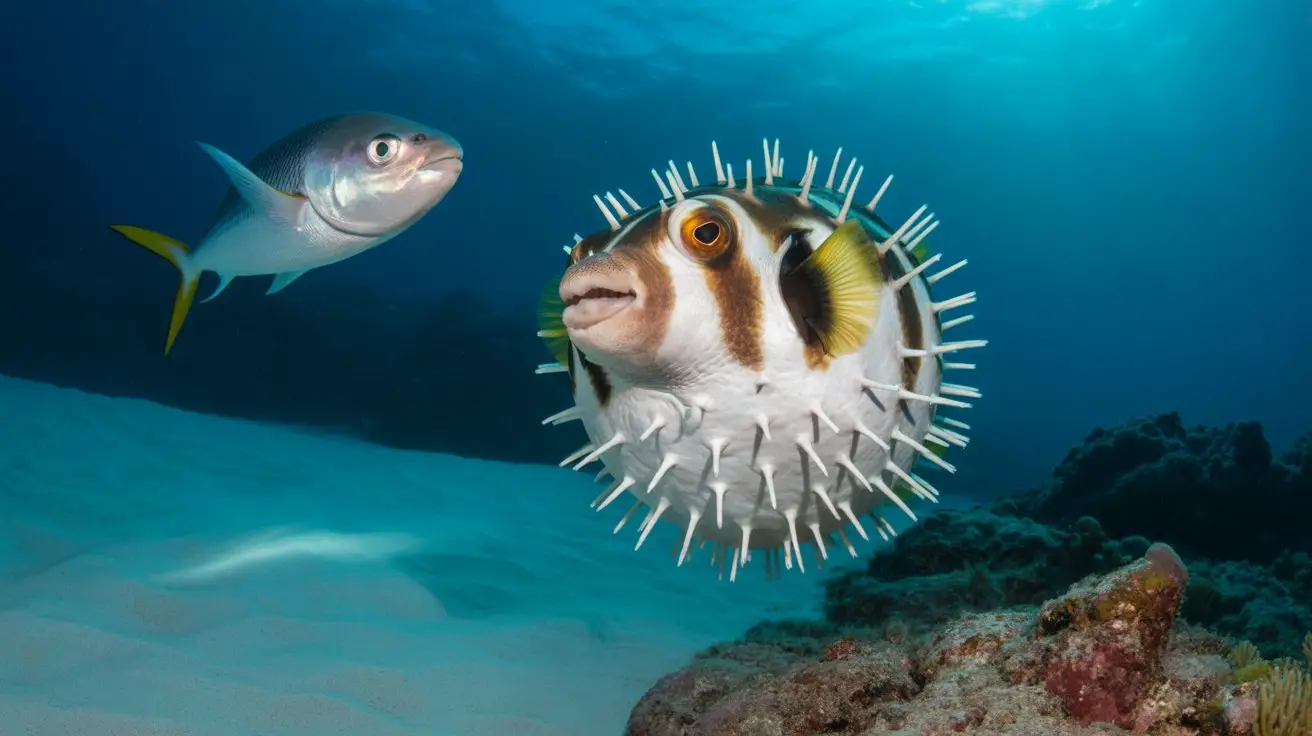
These species-specific adaptations face their ultimate test when pufferfish encounter actual predators in their natural environments.
You’ll observe distinct behavioral sequences when predators approach, with each species deploying characteristic defense protocols based on their evolutionary specializations.
During predator encounters, three critical phases determine survival outcomes:
- Detection phase – Pufferfish utilize lateral line systems and visual cues to identify approaching threats, initiating rapid physiological preparation for defensive responses.
- Activation phase – Species execute primary defense mechanisms, including inflation, spine erection, or toxin release, depending on taxonomic classification and threat proximity.
- Escape phase – Post-defense maneuvering occurs through rapid deflation and enhanced locomotion, allowing strategic repositioning within reef structures or open water columns.
You’ll find that successful predator evasion correlates directly with species-specific adaptation efficiency and environmental context variables.
The Energy Cost: Metabolic Demands of Defensive Transformations
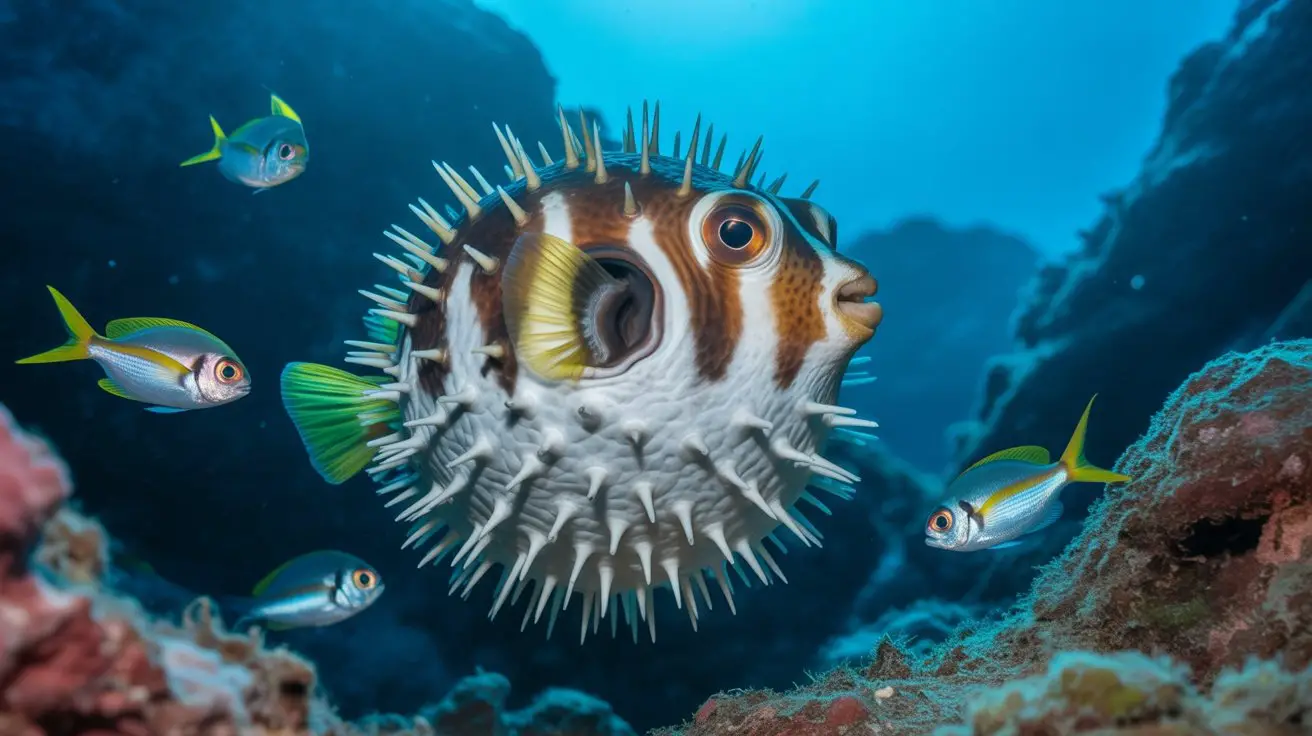
When pufferfish deploy their defensive mechanisms, you’ll observe substantial metabolic costs that greatly impact their energy budgets and survival strategies. The inflation process requires rapid water intake and muscular contractions, increasing oxygen consumption by 300-400% above baseline levels.
You’ll notice that maintaining the inflated state demands continuous energy expenditure, as specialized muscles must sustain tissue expansion and structural integrity.
Recovery phases present additional metabolic burdens. You’ll find that deflation and cellular repair processes consume significant ATP reserves, often requiring 2-6 hours for complete physiological restoration.
These energy demands create trade-offs with other essential functions including growth, reproduction, and foraging activities. Consequently, you’ll see that frequent defensive activations can compromise long-term fitness, making pufferfish selective about when they deploy these costly but life-saving transformations.
Evolution and Adaptation: How Pufferfish Developed These Survival Skills
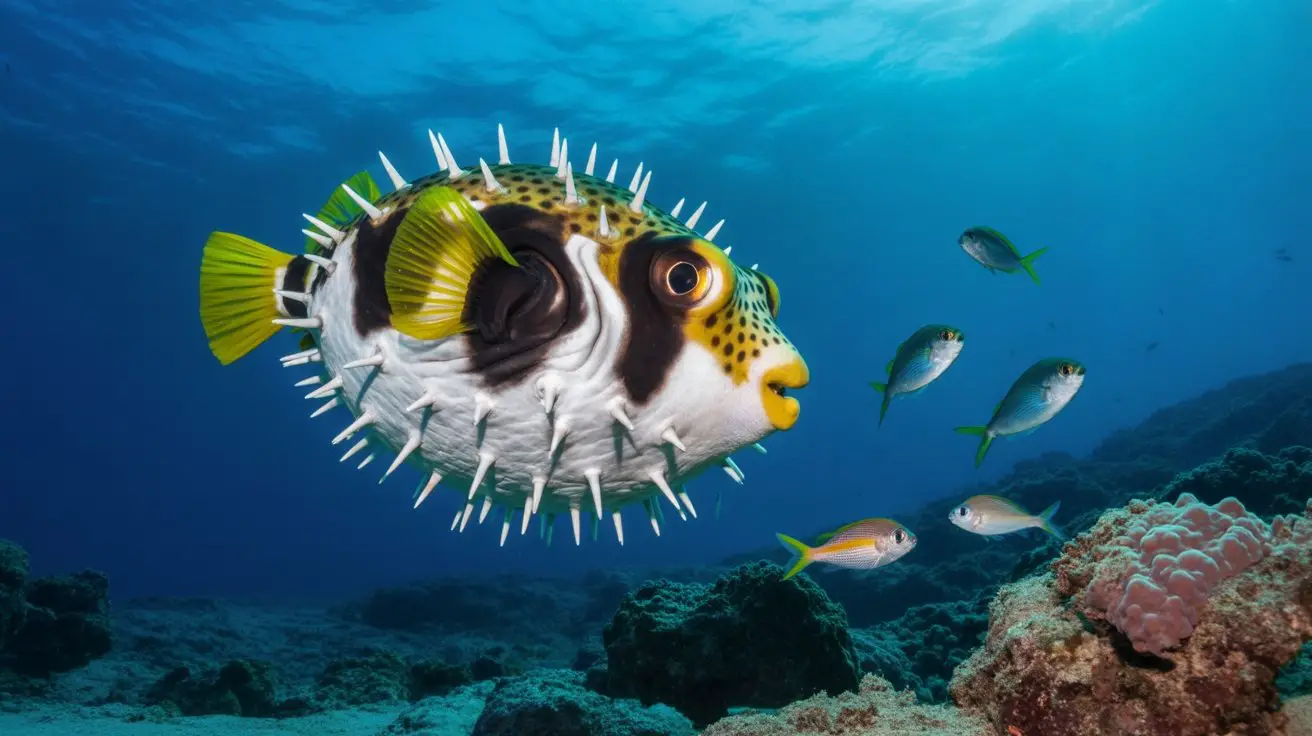
Through millions of years of evolutionary pressure, pufferfish developed their remarkable defensive capabilities as predation intensified in marine ecosystems during the Cretaceous period.
You’ll observe these adaptations emerged through natural selection favoring individuals with enhanced survival mechanisms.
Three key evolutionary developments shaped modern pufferfish defenses:
- Tetrodotoxin production – Symbiotic bacteria in specialized tissues synthesize this potent neurotoxin, making consumption lethal for predators.
- Inflation anatomy – Modified stomach structures and elastic skin allowed rapid body expansion when threatened.
- Spinal weaponization – Dermal spines evolved to protrude during inflation, creating an impenetrable barrier.
You can trace these adaptations through fossil evidence showing gradual morphological changes.
Phylogenetic analyses reveal that different pufferfish lineages independently evolved similar defensive strategies, demonstrating convergent evolution’s role in optimizing survival against shared predatory pressures across diverse marine environments.
Conclusion
You’ve witnessed nature’s masterclass in biological engineering—pufferfish don’t merely survive; they’ve weaponized themselves into living chemical laboratories. When you’re facing predation, you can’t afford half-measures, and these aquatic alchemists haven’t settled for mediocrity. They’ve evolved rapid-deployment inflation systems, synthesize lethal neurotoxins, and deploy defensive spines with military precision. You’re observing four hundred million years of evolutionary refinement condensed into a perfectly calibrated survival mechanism.
